Netting Up
This is a technique that I learned from one of the Indian sericultural texts. Prior to this, I had been carefully moving them leaf by leaf, picking up the leaves and stems with tweezers - this is a huge time saver.
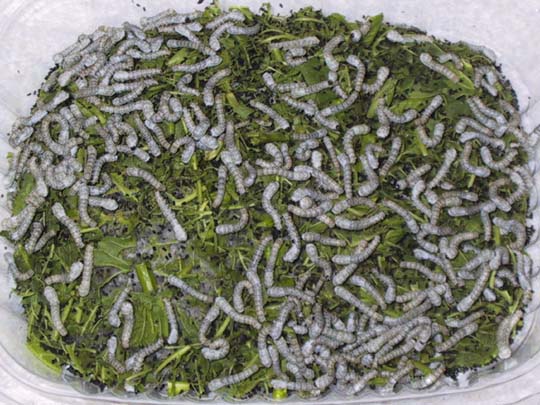
After a couple of days of eating, the worms have made quite a mat of stems and frass. If it begins to mold, it can threaten their health, so it's important to change their bedding. These are first instar worms; they are less than a quarter inch long.
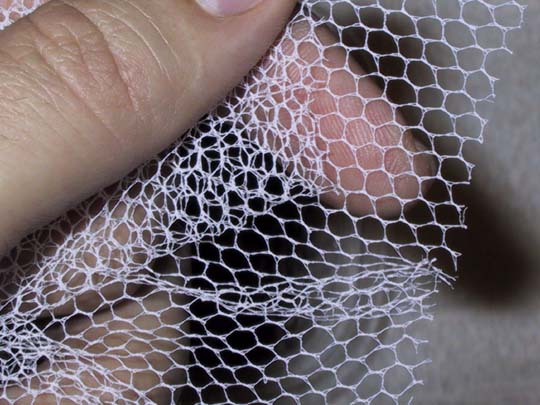
This is large-cell netting, from the fabric store. It's cheap. I wash it in the clothes washer with to make sure there wasn't anything chemical on it, then cut it into small pieces.
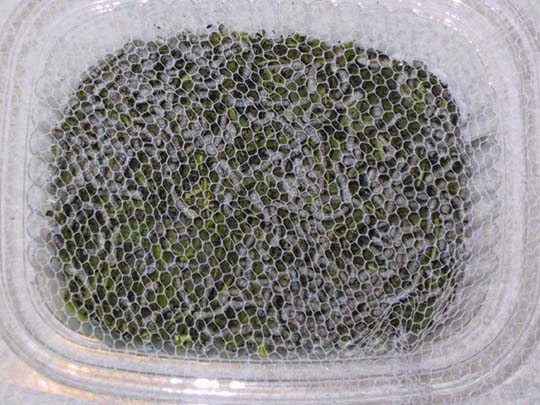
I put the netting over the little trays. You can't really see it from the photos, but the netting is pushed down, right on top of the worms.
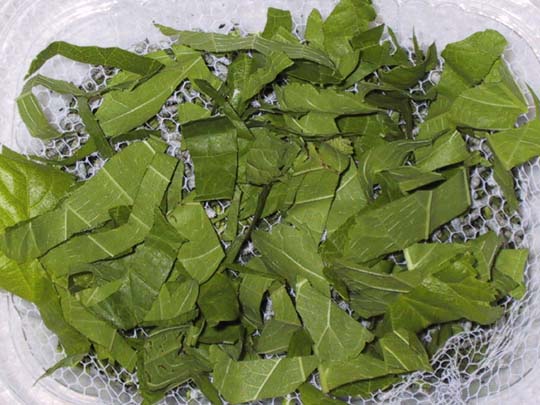
Next, I cover the netting with chopped tender leaves.
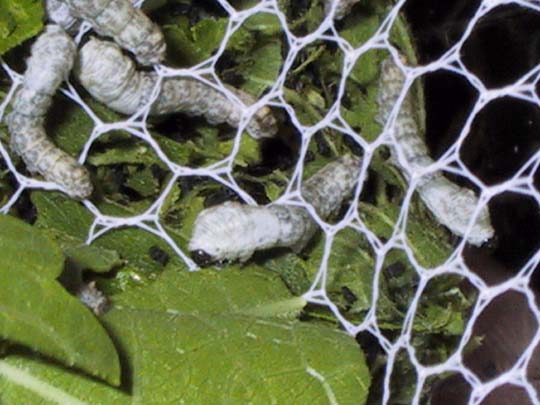
Within just minutes, the worms began to crawl through the netting to get to the fresh leaves.
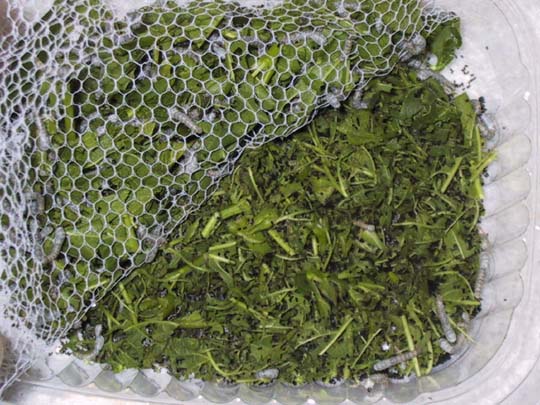
And after about half an hour, this is the desired result. I can lift up the netting, and pick up almost all the caterpillars. There are a few strays left behind; in sericultural practice, these are often abandoned, but I'll give them another chance to get with the program. The netting gets thoroughly bound up with frass and leaf matter, so I dispose of them to avoid harboring disease organisms. Since I get several dozen of them per $1.79 yard of the mesh, I don't worry much about the netting. I net up the caterpillars once in the first instar, twice in the second instar, and usually 2 or 3 times in the third instar.
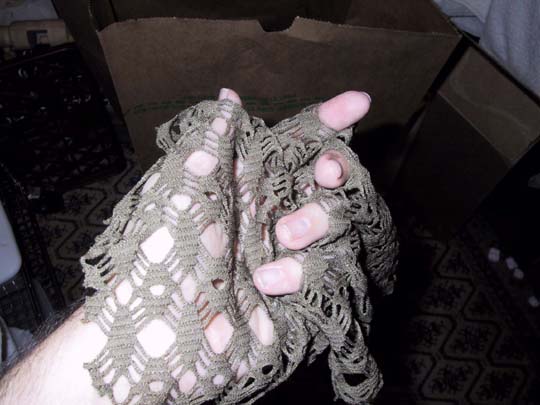
This is the netting that I use for the fourth and fifth instar worms. After third instar, their heads are too big to fit through the smaller mesh. I couldn't find nylon mesh the right size, but I found this lovely "fashion fabric" at the fabric store. I can't imagine anything made from it other than camouflage for large equipment. It's 100% polyester, and stands up to washing in hot, with bleach, without raveling. Because these are so much larger, and the changes more frequent, I wash and dry and reuse these. Bleach and hot water in the washing machine sanitize them to prevent disease.
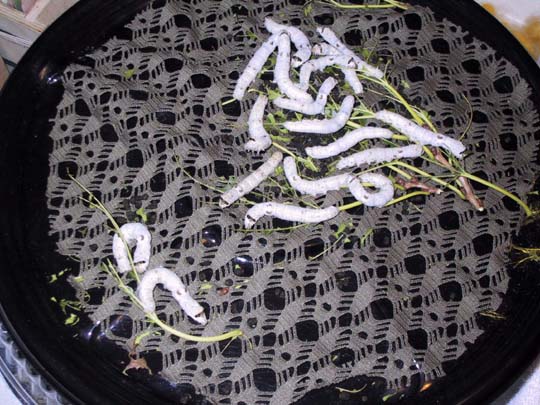
This tray of fifth-instar worms has just finished eating its leaves. You can't see it against the black tray, but there's a bunch of frass on there too.
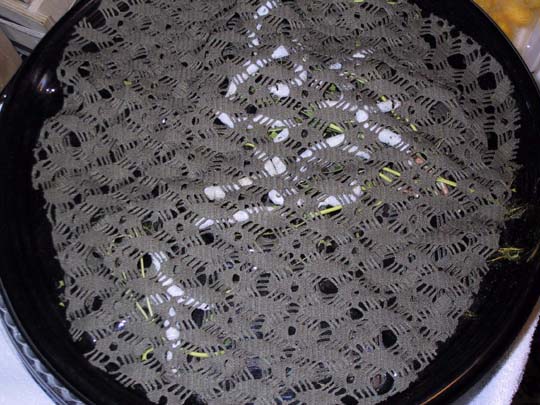
I put a fresh circle of netting over the worms.
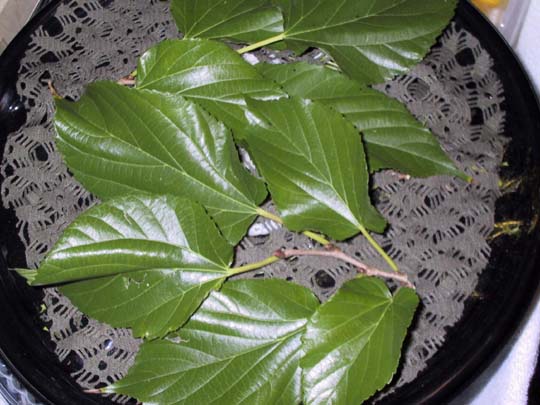
Then, the netting is covered with leaves.
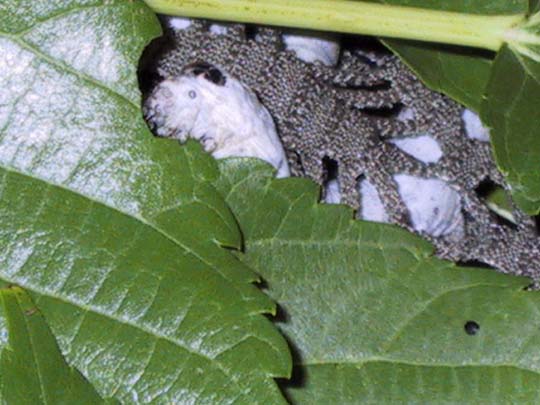
The worms quickly crawl upward, smelling the leaves.
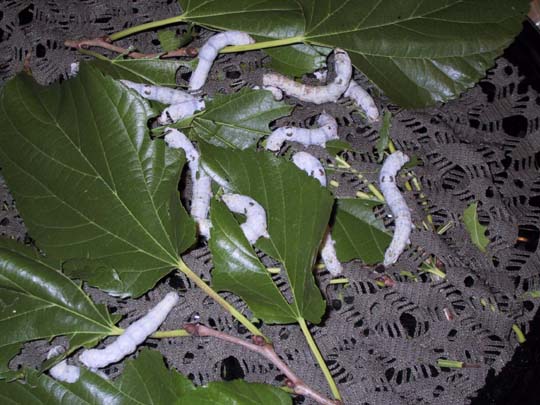
They're usually all on top within half an hour or so.
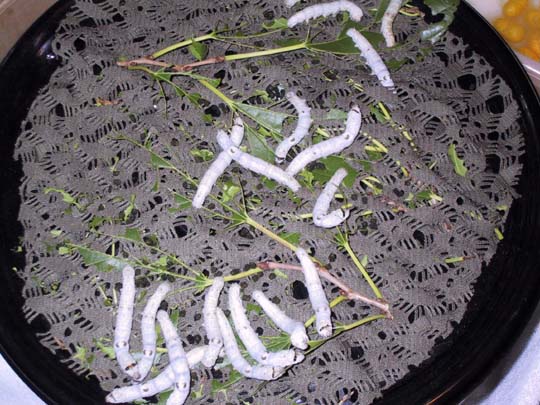
And within an hour or two, they've finished off the leaves.
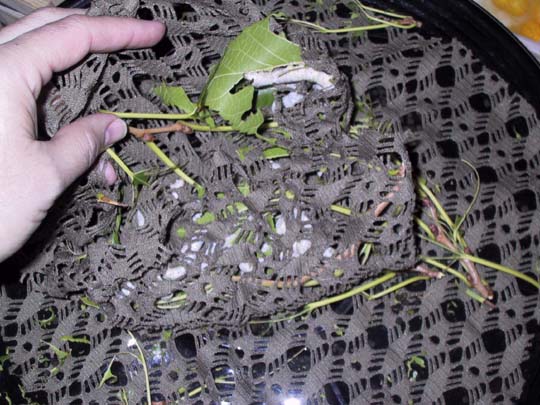
Then, I just gather up the circle of netting, and lift it up, worms and all. Frass drops through the netting, and I shake out the old net in the trash can to get rid of the leaf stems. Then, the new net goes back down on the cleaned tray, and they're good for another day! All the books I've read recommend changing the bedding of fifth-instar worms once per day. With this method, I've had very little disease, and pretty much zero mold. The few sick worms that I have encountered usually don't feel well enough to climb upward through the net, so I remove them when I clean the bedding.